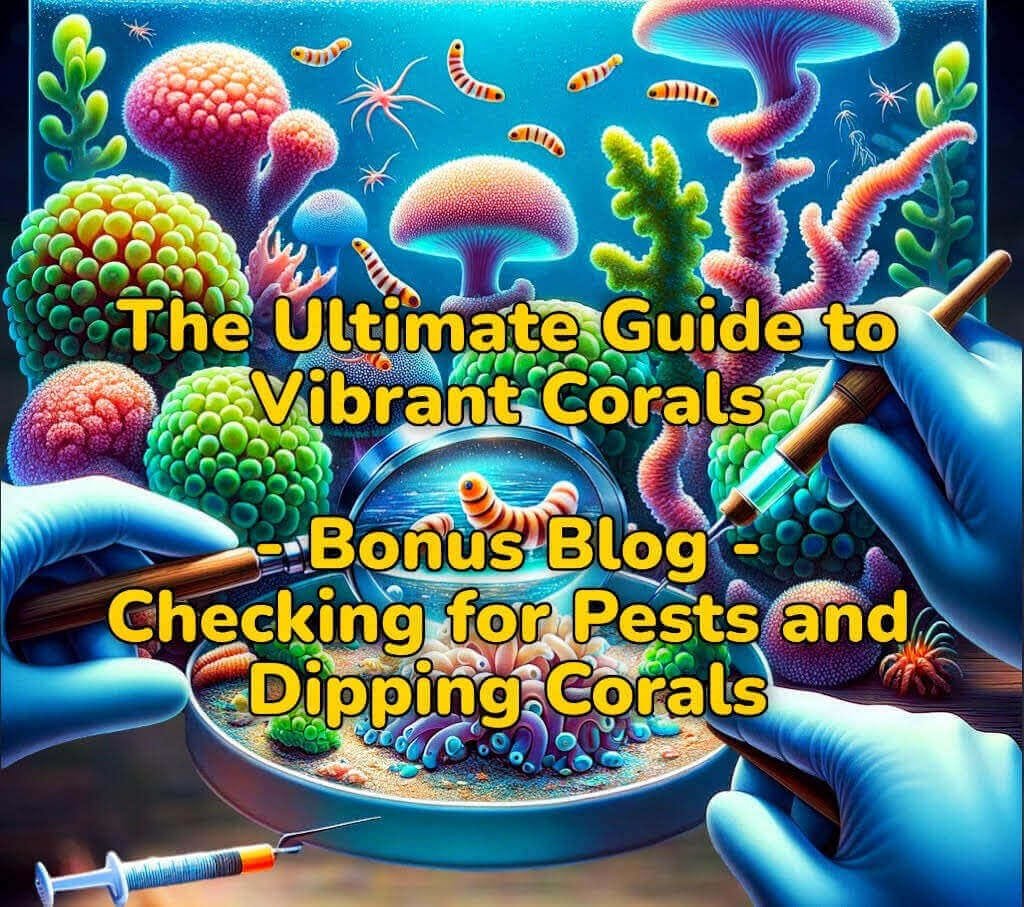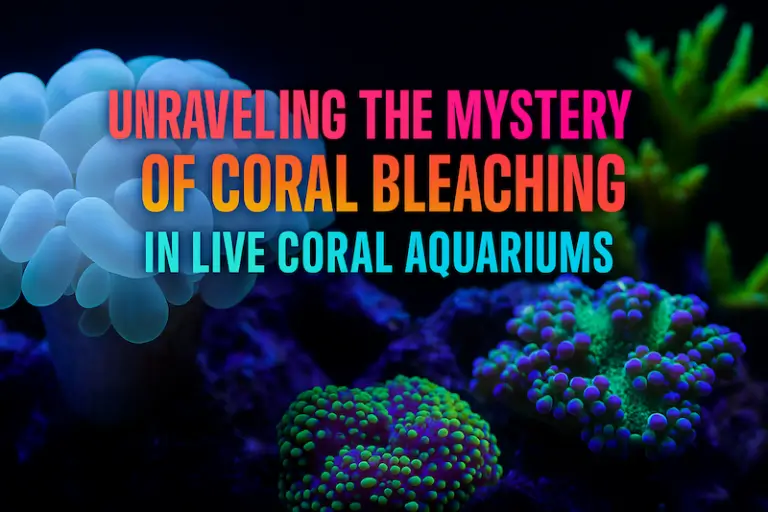The Ultimate Guide to Vibrant Corals – Bonus Blog: Checking for Pests and Dipping Corals
Why Check for Pests and Dip Corals?
Checking for pests and dipping corals serves several important purposes:
1. Pest Prevention: By inspecting new coral additions for pests and pathogens, you can reduce the risk of introducing harmful organisms into your aquarium, such as flatworms, nudibranchs, and parasitic snails.
2. Disease Prevention: Dipping corals in a specialised solution helps remove pests, parasites, and pathogens from the coral’s surface, reducing the likelihood of disease transmission to other corals in your aquarium.
3. Coral Health: Removing pests and pathogens from corals before introducing them to your aquarium helps ensure the long-term health and vitality of your reef ecosystem, promoting vibrant coral growth and coloration.
Identifying Common Pests
Before dipping corals, it’s essential to inspect them carefully for signs of common pests and pathogens. Some common coral pests include:
• Flatworms: Flatworms are small, flat-bodied organisms that can quickly reproduce and spread throughout your aquarium, smothering coral tissues and inhibiting growth.
• Nudibranchs: Nudibranchs are brightly coloured marine snails that feed on coral tissues, leaving behind bare patches and causing tissue necrosis.
• Parasitic Snails: Certain species of snails, such as pyramid snails and sundial snails, can parasitise corals by drilling holes in their skeletons and feeding on coral tissues.
• Acropora-Eating Flatworms (AEFW): AEFWs are a specific type of flatworm that target Acropora corals, causing tissue loss and potentially devastating entire colonies if left unchecked.
Steps for Coral Dipping
1. Prepare Dipping Solution: Mix a specialised coral dipping solution according to the manufacturer’s instructions. Common dipping solutions include iodine-based dips, coral dips containing pesticides such as Bayer Advanced, and freshwater dips.
2. Inspect Corals: Carefully inspect each coral for signs of pests, including visible flatworms, nudibranchs, or parasitic snails. Use a magnifying glass or macro lens to examine coral surfaces closely.
3. Dip Corals: Submerge the corals in the prepared dipping solution for the recommended duration, typically ranging from a few minutes to several minutes, depending on the solution used. Gently agitate the corals during the dipping process to dislodge any pests or pathogens.
4. Rinse Corals: After dipping, rinse the corals thoroughly in clean saltwater to remove any residual dipping solution and ensure that no harmful chemicals remain on the coral’s surface.
5. Acclimate and Quarantine: Acclimate the dipped corals to your aquarium environment slowly, and observe them closely in a separate quarantine tank for signs of stress or disease before introducing them to your main display tank.








